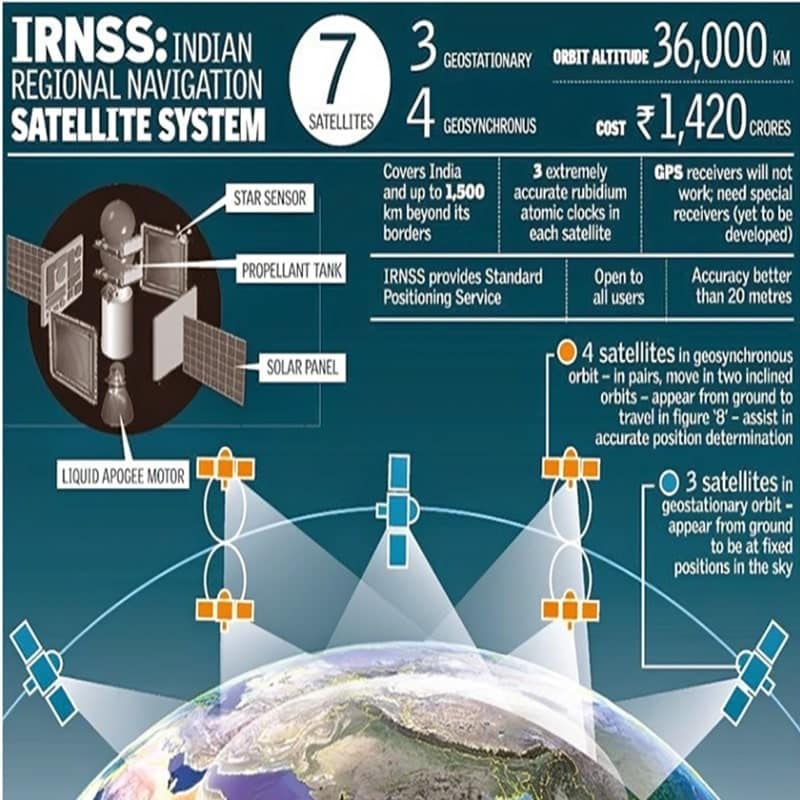
In a major move to enhance its timekeeping infrastructure and national defence capabilities, India is deploying its network of atomic clocks across the country.
This initiative aims to synchronize all digital devices with the Indian Standard Time (IST), ensuring uniformity and boosting national security.
The deployment of these highly accurate atomic clocks is being spearheaded by the National Physical Laboratory (NPL) under the Ministry of Science and Technology and the Ministry of Consumer Affairs.
By June this year, new atomic clocks will be installed in Bhubaneswar, Jaipur, and Hyderabad, complementing the existing ones in Faridabad and Ahmedabad.
What are Atomic Clocks?
Atomic clocks are known for their exceptional accuracy and are considered the most precise timekeeping devices in the world.
- It was invented in 1955 by Louise Essen.
- These clocks function by utilizing the specific resonance frequencies of atoms, typically cesium or rubidium.
- The extreme precision of atomic clocks is mind-boggling – they lose just one second in approximately 100 million years.
- Currently, India has operational atomic clocks in Ahmedabad and Faridabad, maintained by the CSIR-National Physical Laboratories (CSIR-NPL).
- The most commonly used types of atomic clocks are the cesium atomic beam, the hydrogen maser, and the rubidium gas cell.
- While the cesium clock offers high accuracy and good long-term stability, the hydrogen maser has the best stability for periods of up to a few hours.
Working of Atomic Clocks
The functioning of atomic clocks is governed by microwave electromagnetic radiation (ER).
- Maintaining the precise frequency of this radiation is important to induce quantum transitions in cesium or rubidium atoms.
- When the radiation is maintained at a specific frequency, it triggers the quantum transition (energy change) in the atoms.
- These quantum transitions are then observed and maintained in a feedback loop, and the waves generated in these transitions are counted to arrive at the value of a second.
Cesium Atomic Clocks:
- These clocks measure the frequency of transitions between two energy levels of cesium-133 atoms.
- By definition, a second is the duration of 9,192,631,770 cycles of radiation corresponding to the transition between two energy levels of a cesium-133 atom at rest at a temperature of 0 Kelvin.
- Cesium clocks use a beam of cesium atoms. The atoms are excited by microwaves, and the frequency of the microwave source is tuned until it matches the natural frequency of the atoms.
- The accuracy of cesium beam atomic clocks can reach about one second in 100 million years.
Rubidium Atomic Clocks:
- These are another type of atomic clock, using rubidium atoms instead of cesium.
- Rubidium clocks are generally less accurate than the best cesium clocks but are more compact, require less power, and are used in many applications, including telecommunications and as the onboard timekeeping devices in GPS satellites.
Hydrogen Maser Clocks:
- Hydrogen maser clocks operate using hydrogen atoms. They offer very high short-term stability and are used in scientific research, including space missions and in the measurement of the Earth’s rotation.
Optical Lattice Clocks:
- A newer generation of atomic clocks uses atoms cooled to extremely low temperatures and trapped in an optical lattice—a grid formed by intersecting laser beams.
- These clocks operate at optical frequencies, which are much higher than the microwave frequencies used in cesium and rubidium clocks, potentially allowing for even greater accuracy.
Why is India Developing its Atomic Clocks?

The initiative to develop indigenous atomic clocks was sparked by the denial of Global Positioning System (GPS) information during the Kargil War in 1999.
- This event highlighted the need for India to have independent timekeeping capabilities for national defence, cybersecurity, and critical infrastructure operations.
- India is working to connect its atomic clocks via optical cables to bolster security against potential disruptions during emergencies or wartime, complementing satellite-based time dissemination.
- This move aims to reduce reliance on foreign atomic clocks, especially for critical infrastructure like the Indian Regional Navigation Satellite System (IRNSS), also known as NavIC.
- Developing indigenous atomic clocks allows India to have complete control over its navigation systems, which is vital for both national security and technological independence.
- Most software operating modules, such as Windows and Android, rely on US-based Network Time Protocol (NTP) servers for timekeeping.
- By establishing its atomic clock network, India can assert greater control over its digital infrastructure and reduce vulnerabilities to potential disruptions or manipulation from external sources.
- Currently, only four countries – the United States, the United Kingdom, Japan, and South Korea – have developed their atomic clocks.
Ensuring Uniformity and Seamless Synchronization
IST was adopted on September 1, 1947, with only one time zone for the entire country.
- It is calculated from the 82.5 degrees East longitude, near Mirzapur (Allahabad, UP), and is 5.5 hours ahead of Greenwich Mean Time (GMT).
- The deployment of atomic clocks across India will play an important role in ensuring the seamless synchronization of all digital devices with the country’s official time standard.
This will have far-reaching implications for various sectors, including:
- Telecommunications: It will enable precise synchronization of signals across telecommunication networks, ensuring optimal performance and reliability.
- Financial Transactions: The accurate timekeeping provided by the atomic clock will be essential for secure and reliable financial transactions, including stock trading and online banking.
- Scientific Research: It will support advanced scientific research and experiments that require extremely precise timekeeping, such as in the fields of astrophysics, quantum computing, and gravitational wave detection.
- National Defence: Accurate timekeeping is crucial for the effective operation of India’s defence systems, including satellite-based navigation, communication, and surveillance.
- Transportation: It will play a vital role in the synchronization of transportation systems, such as air traffic control, railway signalling, and maritime navigation.
Conclusion
By establishing this nationwide network of atomic clocks, India is taking a significant stride towards strengthening its technological capabilities, enhancing national security, and ensuring the seamless synchronization of its digital ecosystem.
This initiative represents a major step forward in India’s quest for self-reliance and technological sovereignty in the 21st century.
Article Written By: Priti Raj






Leave a Reply